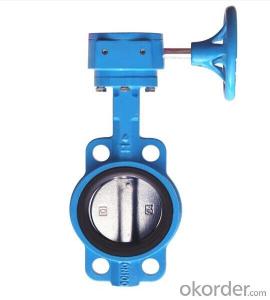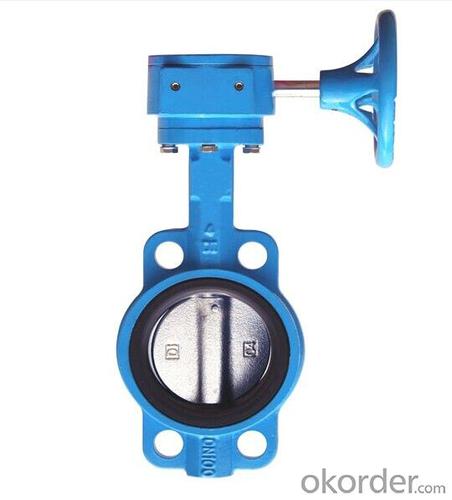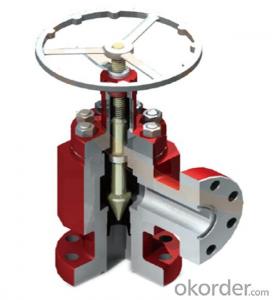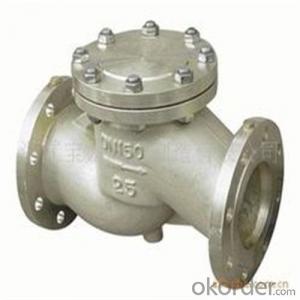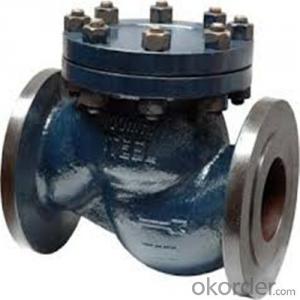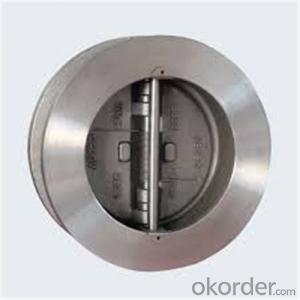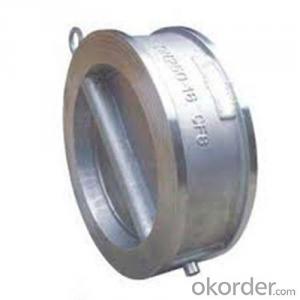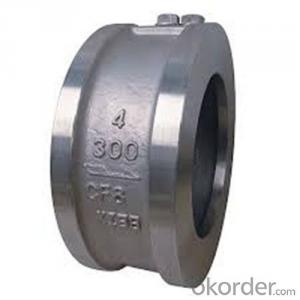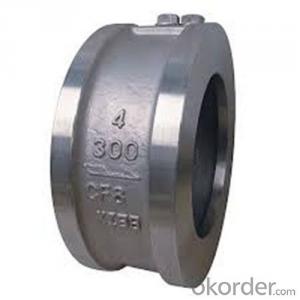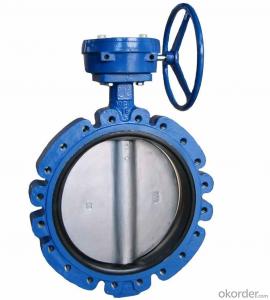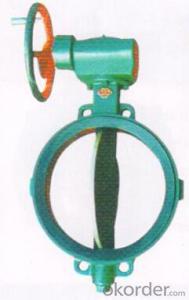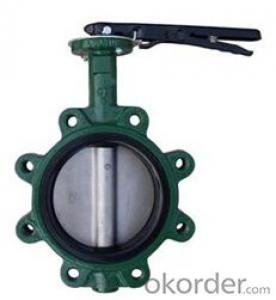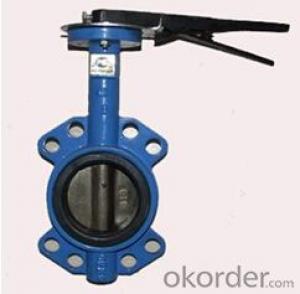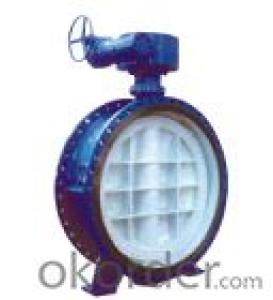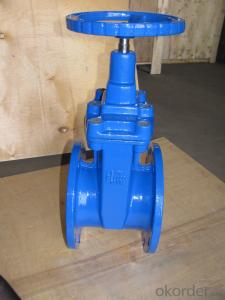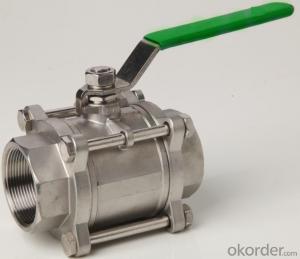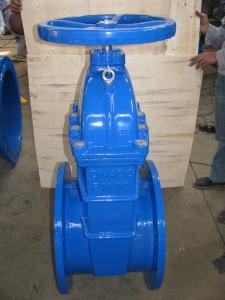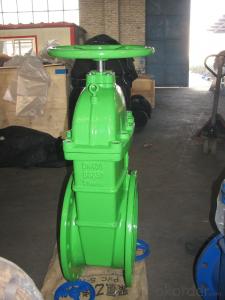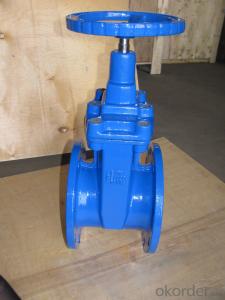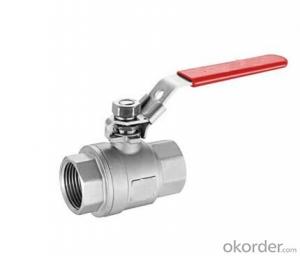DN350 Turbine Type Butterfly Valve BS Standard
- Loading Port:
- Tianjin
- Payment Terms:
- TT OR LC
- Min Order Qty:
- 1 set
- Supply Capability:
- 5000 set/month
OKorder Service Pledge
OKorder Financial Service
You Might Also Like


General valve using the market long-term, widespread Water Leakage, rust phenomenon, soft sealing gate valve produced by the introduction of foreign advanced technology of the enterprise. To overcome the poor sealing gate valve, general elastic fatigue, rust and other defects. Soft sealing gate valve is a traditional valve replacement products, the compensation effect of using flexible gate produce small deformation, achieve good sealing effect, the valve has a light switch, reliable sealing, good elastic memory and long service life and other significant advantages, can be widely used in water, sewage, construction, food, medicine, metallurgy, electric power, textile, energy systems, fluid pipeline regulation and closure devices as.
The characteristics of:
- flat style seat
The traditional control valve often pass after washing due to foreign objects such as stone, wood, cement, paper, and other debris deposited on the valve at the end of the groove. Close but not close easily lead to the formation of Water Leakage phenomenon, the lower part of the soft sealing gate valve with water using the same flat design, easy to siltation caused by debris, the fluid unimpeded.
And the overall package glue
The valve plate is made of high-quality rubber overall, the outsourcing of plastic, making the domestic first-class rubber vulcanization vulcanization after the valve plate to ensure accurate geometry, and the rubber and ductile iron gate is connected firmly, not easy to fall off and good elastic memory.
And corrosion resistance
The valve body adopts epoxy coating powder, can prevent the corrosion and rust, and can be used for sewage systems.
And not easy to break
Traditional cast iron garden gate often hit foreign objects, collision or overlap caused by the fracture phenomenon. Because the valve to switch to ductile iron, this is the case already significantly reduced.
Three "O" ring seal
As the valve stem with three "0" ring ring seal design, can reduce friction when the switch is greatly reduced, Water Leakage phenomenon and can cut off the water supply construction not replace sealing ring.
And help to drink
Due to the internal body to non-toxic epoxy resin coating, gate of the inner and outer surfaces are completely coated with rubber and can not rust or corrosion of water available to drink.
- Casting valve
Valve body casting, precise geometry makes the body without any internal finishing to ensure that the valve seal.
And light weight
The valve is made of ductile cast, lighter in weight than conventional gate weight about 20%-30%. Convenient installation and repair.
Overview:
General valve using the market long-term, widespread Water Leakage, rust phenomenon, soft sealing gate valve produced by the introduction of foreign advanced technology of the enterprise. To overcome the poor sealing gate valve, general elastic fatigue, rust and other defects. Soft sealing gate valve is a traditional valve replacement products, the compensation effect of using flexible gate produce small deformation, achieve good sealing effect, the valve has a light switch, reliable sealing, good elastic memory and long service life and other significant advantages, can be widely used in water, sewage, construction, food, medicine, metallurgy, electric power, textile, energy systems, fluid pipeline regulation and closure devices as.
The characteristics of:
- flat style seat
The traditional control valve often pass after washing due to foreign objects such as stone, wood, cement, paper, and other debris deposited on the valve at the end of the groove. Close but not close easily lead to the formation of Water Leakage phenomenon, the lower part of the soft sealing gate valve with water using the same flat design, easy to siltation caused by debris, the fluid unimpeded.
And the overall package glue
The valve plate is made of high-quality rubber overall, the outsourcing of plastic, making the domestic first-class rubber vulcanization vulcanization after the valve plate to ensure accurate geometry, and the rubber and ductile iron gate is connected firmly, not easy to fall off and good elastic memory.
And corrosion resistance
The valve body adopts epoxy coating powder, can prevent the corrosion and rust, and can be used for sewage systems.
And not easy to break
Traditional cast iron garden gate often hit foreign objects, collision or overlap caused by the fracture phenomenon. Because the valve to switch to ductile iron, this is the case already significantly reduced.
Three "O" ring seal
As the valve stem with three "0" ring ring seal design, can reduce friction when the switch is greatly reduced, Water Leakage phenomenon and can cut off the water supply construction not replace sealing ring.
And help to drink
Due to the internal body to non-toxic epoxy resin coating, gate of the inner and outer surfaces are completely coated with rubber and can not rust or corrosion of water available to drink.
- Casting valve
Valve body casting, precise geometry makes the body without any internal finishing to ensure that the valve seal.
And light weight
The valve is made of ductile cast, lighter in weight than conventional gate weight about 20%-30%. Convenient installation and repair.


- Q: I am replacing my vanity sink with a Pedestal sink. I turned the shut off vales to the off position tight.I disconnected the cold water and drained the remaining water and everything was fine. I disconnected the hot and drained the water from the connecting tube but water still came out of the shut off valve at a decent pace.I placed my finger over the valve and i felt pressure build up...like when you stick your finger over a bottle of soda.I tightened the bolt on the valve and even the screw to the handle to no resolve.any ideas on how to make it stop while i connect the Pedestal sink?also, i am as novice as it gets.thanks in advance
- It's not the packing nut seal since that only seals the stem which is attached to the handle. There is an inner washer attached to that stem which shuts off the water, this is probably worn and needs replacement. Do not attempt to change this valve, leave it to a professional because it's not an easy thing to do, unless you're good at soldering. Shut off the main water supply that services the whole house. Also note: If you don't have wood behind the sheet rock from your existing vanity, you'll be in trouble, because the Pedestal must be bolted to the wall to be secure otherwise it's a safety hazard.
- Q: how could you make a valve or a system so that when it is pressurized, if enough pressure is reached in the system the valve will open completely and remain opened until it is close manually?I'm thinking about this in the context of an air powered dart gun, so that the firing mechanism is like a piston, and when a certain air pressure is reached, the valve that connects to the barrel will open and fire the dart
- One thing you can do is get a pressure switch and a solenoid valve so that when whatever you are pressurizing comes to a certain level the switch will close it's normally open contacts and energize the solenoid which will open the valve. However as soon as the pressure level goes below the trigger level the valve will automatically close.
- Q: I got a 2012 peterbilt 386 ...it just came back from the shop a few day ago to get injectors 4 and 5 looked at and repaired ....I'm getting a fault code for injector spill valve and a engine light ....I tried resetting the computer to get rid of the code but that's not it ... uld timeing of this cause the problem ...but other than that it runs like a champ so what could I do to fix this is it time cause I did probably get re timed when they repaired it
- The fault for the spill valve is not something you can correct with timing. When they repaired or replace injectors they need to be programed into the computer so they match the other injectors. The spill valve is in the injector and is there to return unneeded fuel back to tank. If this valve does not work you could be over fueling or run the risk of fuel cooking in the injector making a mess of the spray pattern. It should be telling you which injector is throwing the code and if it is one of the two that were worked on take it back.
- Q: Need some info. Ok, four valves per cylinder is better than two valves per cylinder. Fine, why did Ford REVERT to only 3 valves (my guess is to save cost SOHC)? Audi and VW are using five valves per cylinder on some cars, does this offer any advantage over a four valve engine? Maserati even experimented with a six valve per cylinder!!!! (see link) http://www.maserati-alfieri .uk/alfier... but abandoned it (my guess is cost again?) Why are we stuck at four valves or would more valves actually render more horsepower? Pop some ideas best answer to reasonable answer...
- Think of an engine as an air pump - obviously, we want the least amount of restriction for the incoming air and also the least amount for exhausting the compressed air. The ideal situation would be to remove the head during the intake stroke and put it back on during the compression stroke, but, obviously, this isn't possible. On a naturally aspirated engine, the intake is the most critical because the air is moved only by a relatively small difference in pressures. The exhaust stroke, on the other hand, is aided greatly by the super heated temperature and rapid expansion of the gasses. Two intake and one exhaust valve seems to be the most practical and efficient solution - adding more vales means smaller valves and an increase in the overall complexity. I seriously doubt that Maserati ever abandoned ANY automotive idea due to cost restraints. It's far more likely that adding more valves than three or four simply resulted in diminishing returns. Sometimes the allure of a new buzz phrase is nothing more than a marketing ploy - a 16 valve, DOHC, four cylinder engine, for example, is a pretty impressive resume for an engine, regardless of whether it actually is the optimum performance set up or not.
- Q: I have 06 Suzuki gsx-r 750 and i was wondering what are the signs or how do i know that my valves need to be adjusted?
- The only way is to pull the cam covers and check them with a feeler gauge.This should be done at least once a year as part of your regular maintenance.
- Q: Hey guys Itook my car to mechanic because my engine light was on and the code showd that it was unsufficient egr lift or something like that....they had changed the egr valve before so this time they said there was carbon build up and they cleaned it and my car runs great now. i don't have problem with accelaration and the engine doesn't stall when i stop, BUT the light came on again and still shows the same code. I am sick of it!!! anybody knows what else could it be? It's 94 honda accord with 140 000 miles on it.
- The hose may puncture some where,their could lose tappet cover you could have blown inlet gasket.Regards Martin.
- Q: What kind of valve is on this tennis ball cannon in this picture?
- It's a pneumatic valve with a compressed air tank to power the cannon. Any kind of pneumatic valve should do the trick, just make sure you use the correct fittings for whatever valve you buy. The red lever piece is from a standard pressurized air system for a mechanic's shop. It is probably only necessary as a safety mechanism to discharge the air without shooting the ball.
- Q: any flash files explaining valve operation maintenance will be very much helpful
- Hydraulic Pressure Relief Valve Animation
- Q: Hi everybody,I need some information about the operation of a double solenoid valve and how to control it using a PLC
- A double solenoid has two solenoids, and when voltage is supplied to one (and not the other) the valve shifts. Note that if voltage is supplied to both solenoids at the same time, the valve will stay in the position is was in (i.e. it won't shift since the solenoids will be working against each other). This is typically not desired, so make sure you remove voltage from one side when supplying it to the other. If no voltage is supplied to either solenoid, the result will be the same as if voltage is supplied to both, in that the valve will stay in the position is was in. What this means is that the cylinder has no home position, so when power is cut, the valve will stay where it was at that time, and the cylinder will continue to do work in the direction is was working in. Again, depending upon what the cylinder was doing, this may or may not be desired. For Conrolling with PLC you may need to wire two discrete outputs of PLC to those two solenoids using relay. And the ON/OFF those two outputs as required.
- Q: Okay, so when I was little, I had heart surgeyue to a congentital heart defect and I now have a leeky valve, on my aortic valve and i was wondering if it didnt go away would I need to get heart surgery? Or would it need to get bigger?Will it only get bigger or will it alwayse same? If I need heart surgery how long would that be??? have had it since 3rd or 4th grade and I am now in 8th grade. I am just wondering...
- as the doctor said, Could be many issues eventually something will need to be done without the big words ... your Aortic Valve is the MOST important valve in your Body because all the oxygenated Blood that flows From your lungs to each cell passes through the Aortic valve into the aorta and to each cell... More then Likely at some point in your life, the Valve will most likely need repair or replacement.... The good news is... that these are being done quite Normally now in Most Large Hospitals these Days... something to consider if you live in extreme rural places... I would mention that You should have a baseline idea of what is normal exertion for you, and at any point, you begin to feel breathlessness, tireness (above beyond normal) Chest Pain .... Do YOu Have chest pain Now, which is normal then anything above and beyond that should be something you should go to a doctor or even a real hopsital... so with that being said how are you feeling? what sorts of exercise do you typically do? play any sports ? gym? ride a bike? text ?lol point is if things change dont ignore it get to the doctor right away.. if you dont have a doc yet , how about a hospital?
Send your message to us
DN350 Turbine Type Butterfly Valve BS Standard
- Loading Port:
- Tianjin
- Payment Terms:
- TT OR LC
- Min Order Qty:
- 1 set
- Supply Capability:
- 5000 set/month
OKorder Service Pledge
OKorder Financial Service
Similar products
Hot products
Hot Searches
Related keywords
